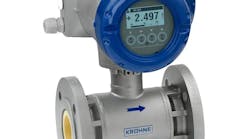While new solutions are exciting, sometimes the best practice is to utilize existing technology in a novel way. In the case of valve-stem packing, mechanical limitations can negatively impact process efficiencies leading to premature failure. The consequence: The system will need to be taken offline for emergency maintenance.
The chemical processing industry relies on the movement and control of high-temperature fluids. These fluids may include caustic chemicals, steam, conventional oils and exotic media — such as molten salts. Many processes operate at a high temperature to maximize efficiency. But the weakest link in the system, often the valve-stem packing, can limit the temperature of these sealed fluids.
Many chemical plants turn to flexible graphite as a cost-effective packing material because its compatible with a wide range of chemicals and capable of withstanding a sustained high operating temperature. Even so, chemical processing operations need to understand unique characteristics and limits of flexible graphite to gain the most use out of it as a sealing technology.
Consider Insulating Rings
Typically, flexible graphite requires a braided end ring that limits the extrusion out of the stuffing box of the soft material. This type of packing set has been around for many years and is sufficient for many conventional applications. As robust as this design may be, it still has its limitations.
The main weakness to this material is chemical attack via oxidization. At high temperatures (over 850° F), graphite will undergo a chemical reaction where the carbon in the packing reacts with the oxygen in the air to degas as CO2. As the graphite oxidizes, there is less material compressed within the stuffing box, leading to load loss and eventually a complete failure. There are two key parts to this chemical process: the temperature and the media that the packing is in contact with. By controlling these two variables, it is possible to limit and even prevent this process from occurring.
While it is not possible to modify the temperature of the media itself, as this is part of the system design, it is possible to control the temperature that the packing sees in the stuffing box. These are not always the same thing, as there are many variables that contribute to the heat transfer from the fluid to the packing. These variables are what we seek to control.
One technique that has been successfully implemented is to utilize a packing set with insulated rings at the bottom of the stuffing box, shielding the graphite from some of the extreme temperature. Using a couple of rings of braided alumina-silica fiber rope, or ceramic gasket spacers, can significantly increase the lifespan of the packing. This will slow down the heat transfer process, allowing the valve body to radiate some of it off, cooling down the packing. It is especially true for extended bonnet valves as they have more material to radiate the heat. It is also recommended to remove external valve insulation from around the stuffing box area to enable this cooling effect.
Some applications require the sealing of high-temperature, oxidizing chemicals that will directly attack graphite regardless of whether there is atmospheric oxygen present. One advantage of using ceramic insulating rings at the bottom of the set is that they can also shield the packing from excessive contact with the media. While ceramic rope, or high-temperature gasket spacers, are incapable of sealing a pressure gradient in a stuffing box on their own, when used as part of a set they can limit the contact between the media and the vulnerable graphite packing rings. This is especially useful when sealing exotic media such as molten salts for power-generating applications.
The Oxidation Risk Factor
Oxidization is the primary concern for graphite because it will quickly oxidize at high temperatures when exposed to atmospheric oxygen. Insulating the packing with either ceramic rope or high-temperature gasket spacers can limit this to an acceptable rate. In addition, removing external insulation around the stuffing box area facilitates heat transfer away from the system, lowering the temperature in the stuffing box. Utilizing these techniques can expand the lifespan of packing to the point to bridge the gap between regularly scheduled maintenance. This is something to consider when looking at what type of seal is currently used in your system.
While implementing these techniques will increase the lifespan of packing in high-temperature applications, oxidization will still occur, albeit at a slower rate. A packing seal that would last indefinitely sounds fantastic on paper, but in some cases, this is unachievable with current material technologies. The intent is to have a packing set that will last long enough to replace during regularly scheduled maintenance. A good analogy is to think of it as a candle. All candles will eventually melt if you leave them lit long enough, but the goal is to have a candle that will burn slowly enough so that it gets you through the night.



